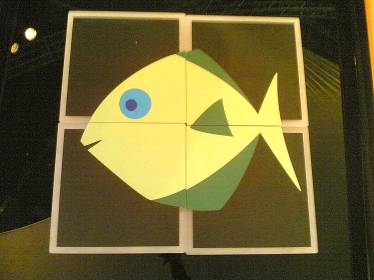Getting better with palpability
For a group of researchers at the University of Siena their work is all about helping people get better with the assistance of palpable computing. On the one hand, they use palpability to improve conditions for rehabilitation. On the other hand, rehabilitation improves and challenges the testing of palpability concepts.
In their development of prototypes, they collaborate with users and also participate in cross-border collaboration with industrial designers from the Aarhus School of Architecture.
The outcome of their work so far is two prototypes that examine palpable challenges and, most important, a new way of making rehabilitation less painful and more enjoyable.
The researchers from Siena focus on two scenarios in collaboration with the rehabilitation unit of Le Scotte hospital:
- Premature babies
An incubator prototype concerned with the special care of newborn babies in the first phase of their lives. The incubator is a delicate but very interesting design space as it involves many users, all with extremely different needs. - The physical and cognitive rehabilitation of children with Down’s syndrome
A Tiles prototype. The basic concept of the active surfaces prototype is to combine the physical and the cognitive rehabilitation of disabled children in a swimming pool environment.
The incubator as secure space
To date, the research group has developed a physical prototype of the incubator with three components:
- The dome,
The dome is designed as a protective environment to fi lter the noise and the light to maintain good conditions inside. - The mattress,
The mattress design is inspired by the Pin art game. Pins are going up and down all the time, massaging the tiny body. This is important in order to reproduce the same kind of movement the baby experiences in the uterus. The pins are also able to change the position of the baby who is not prepared for the gravity force outside the womb. The idea is to create a mattress you can manipulate without jerking the baby. - The wireless biosensors,
The biocensors can e.g. be inserted in the mattress, so that doctors can detect variables in the baby’s condition just by contact with the mattress
Rehabilitation and fun
The active surface prototype is a collection of tile components.
- They constitute natural objects that can exchange data,
- they know their relative position in the space, and
- they can communicate.



They display pictures that support the construction of many configurations of the different tiles outside the water.
The therapists can combine the tiles with event games. They configure the tiles in specific pat terns that the children have to reconstruct during the game in the water. The children have to discover the right sequence, for example how to put in sequence different images from the smallest to the biggest.
Designing for palpability
The physical design of waterproof palpable devices for children with disabilities needs to be considered carefully.
The surface is a part of the game and the design must support the different features of the game.
For the therapists, it has to be easy to configure different kinds of games.
For the children, it has to be easy to understand the meaning of the game.
The physical shape must be without sharp edges and hard surfaces because the children hang onto the tiles and rub their tummies against them.
Further more, they need to be safe and robust enough to be used and played with in water.
Contact details
Patrizia Marti
Department of Communication Science,
University of Siena
Via dei Termini 6
53100 Siena
Phone: +39 0577 270335
E-mail: marti(at)unisi.it
Alessandro Pollini
PhD candidate
Interaction Design Unit
Communication Science Dpt.,
Via dei Termini 6
53100 Siena
Phone. + 39 0577 270565
E-mail: pollini(at)media.unisi.it
